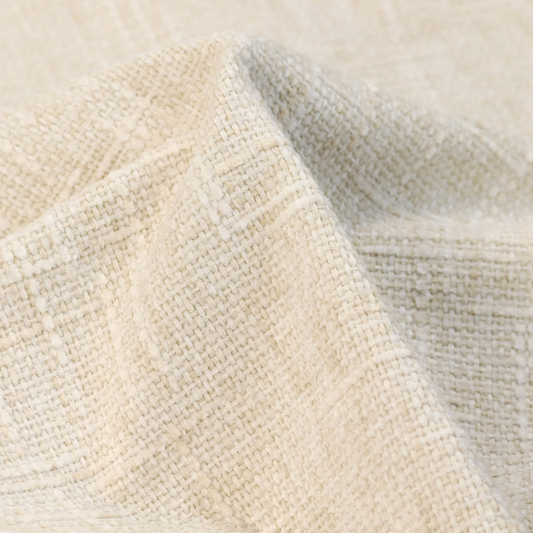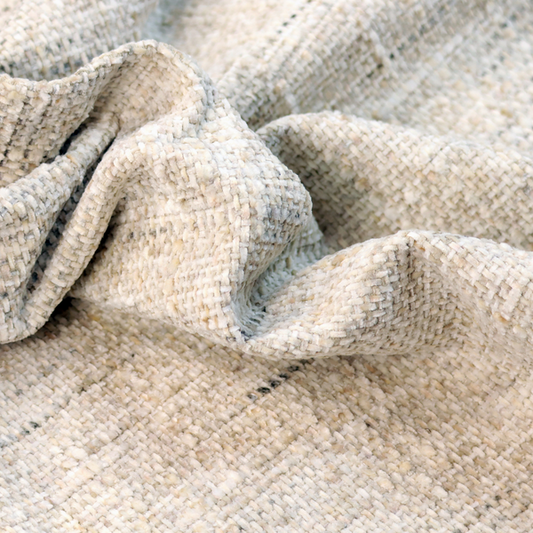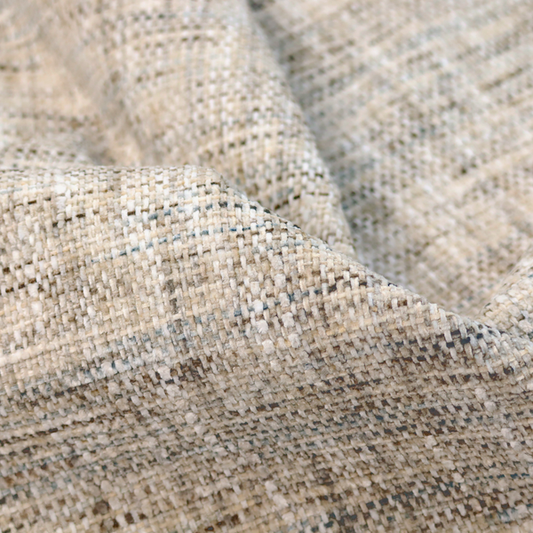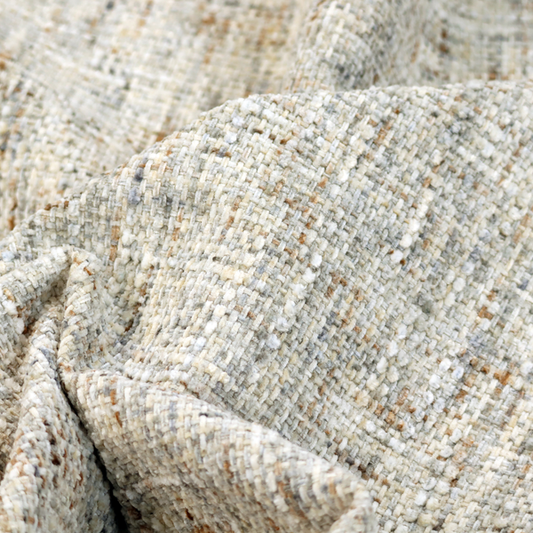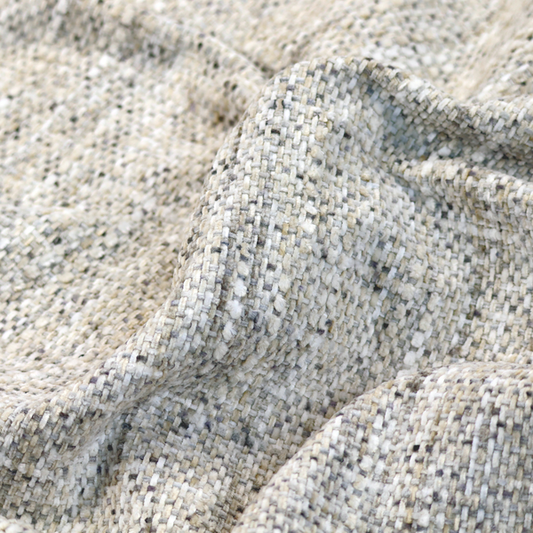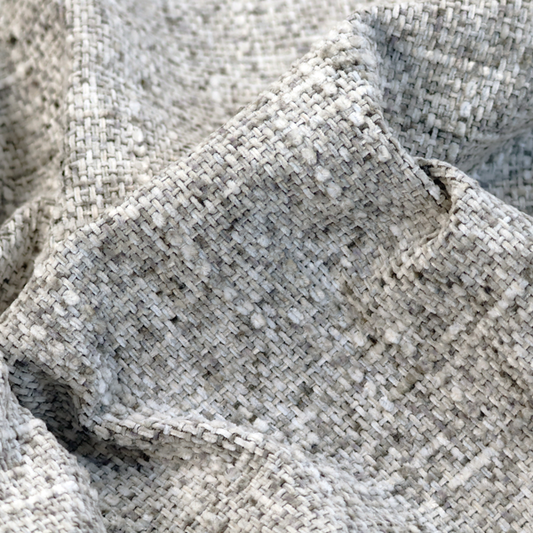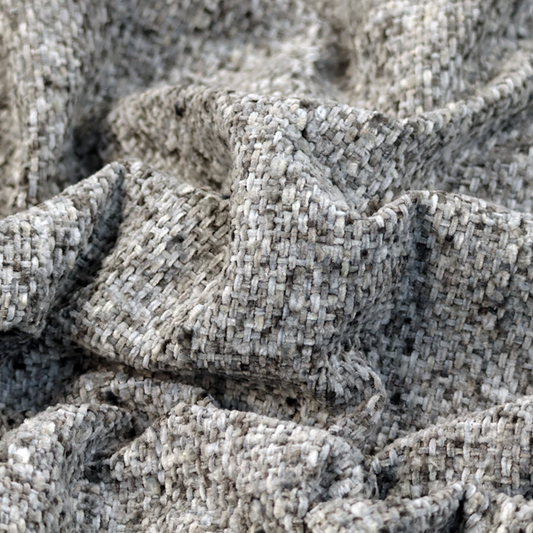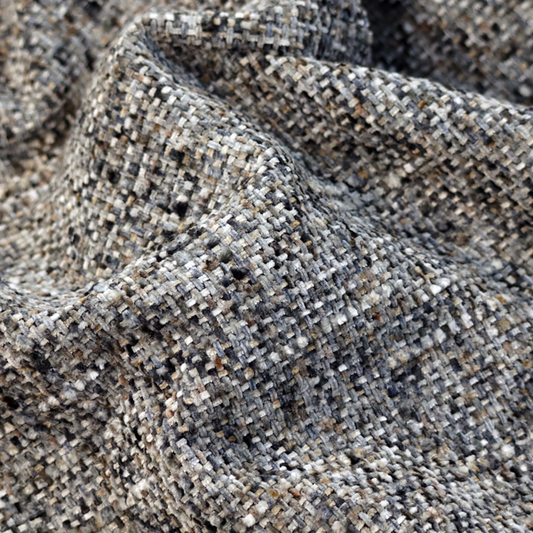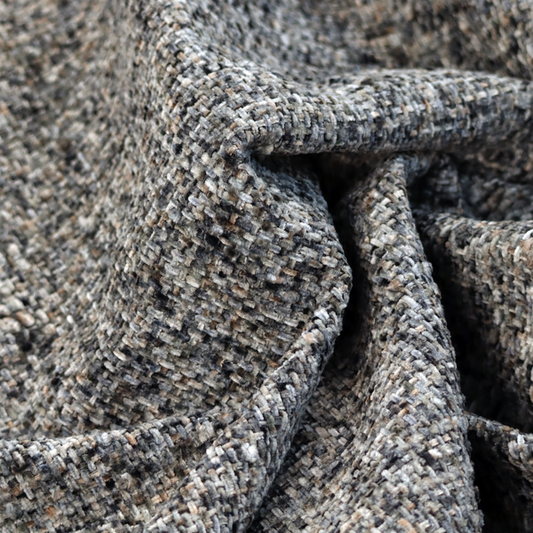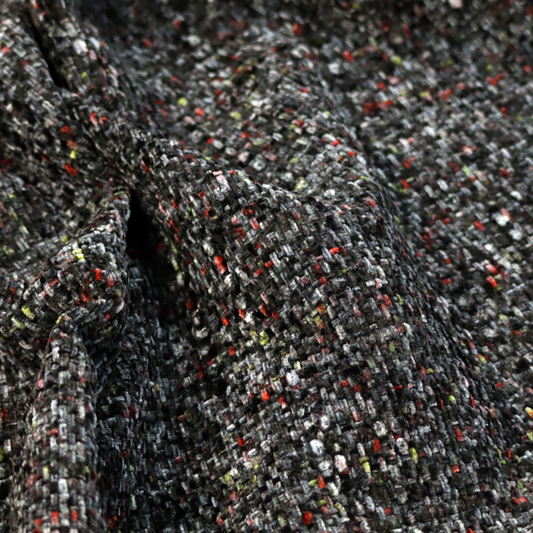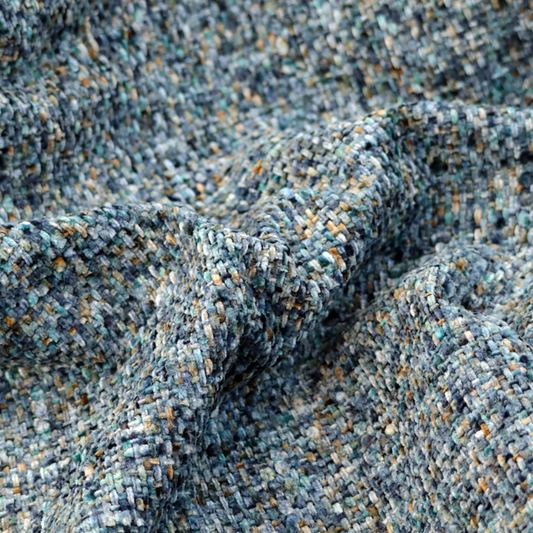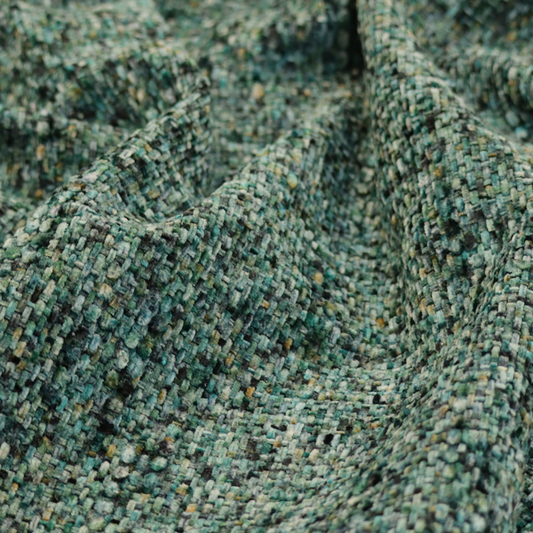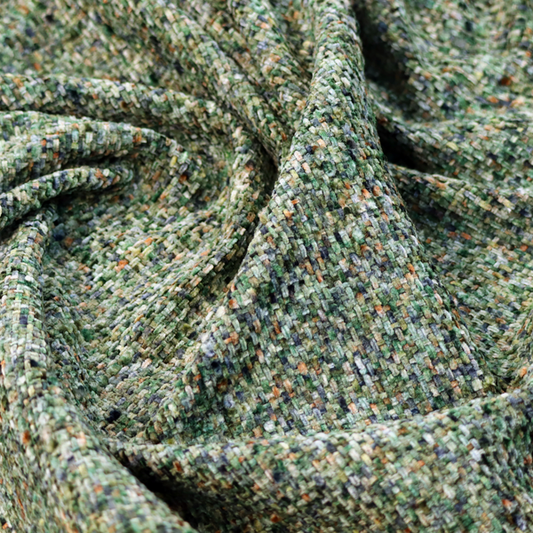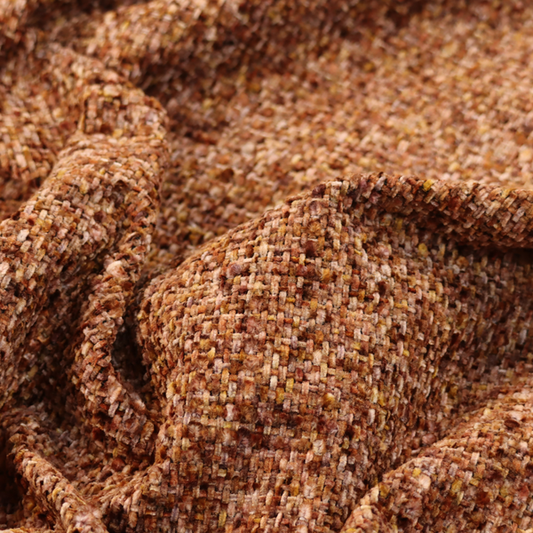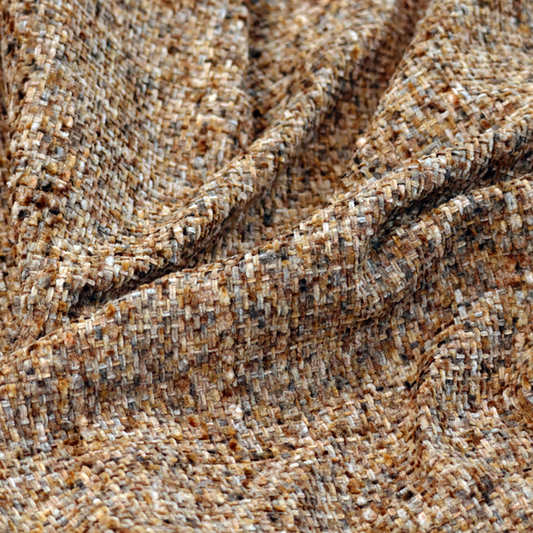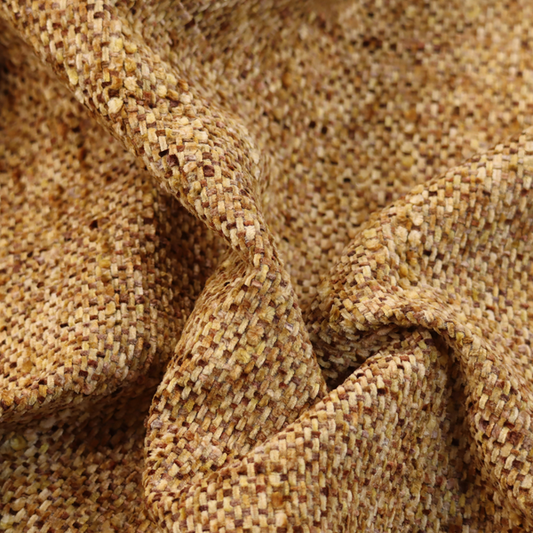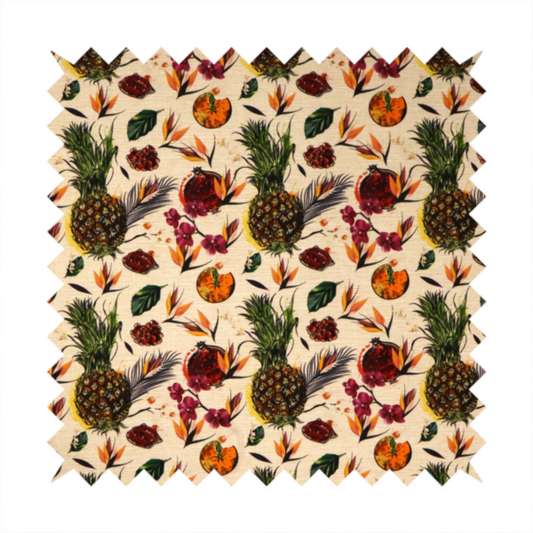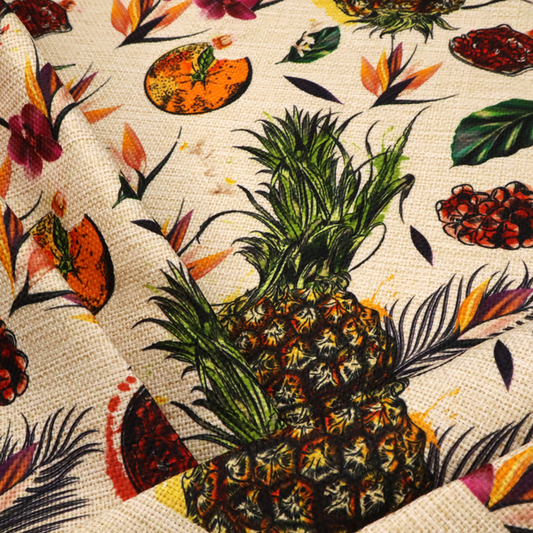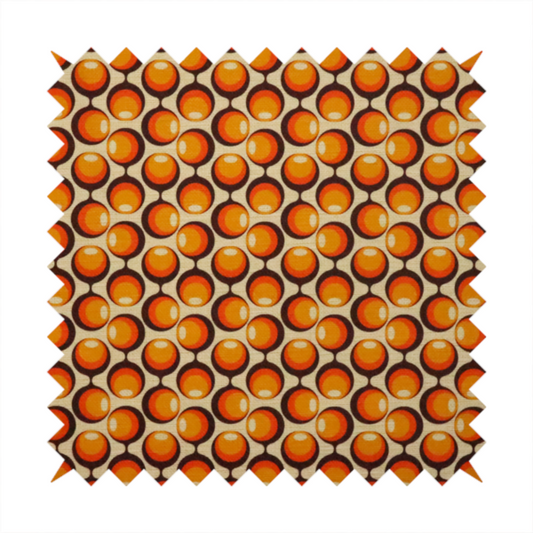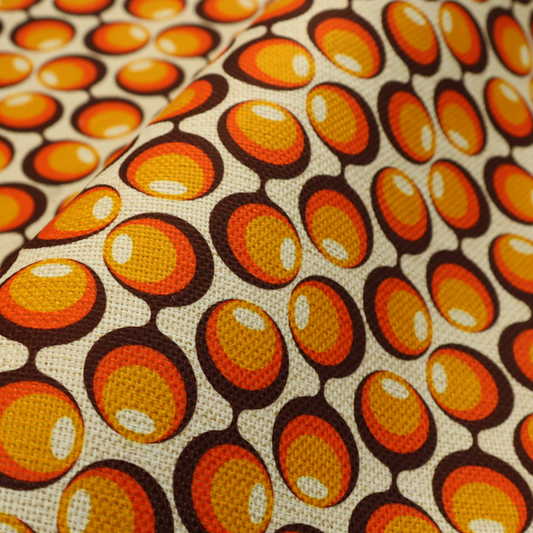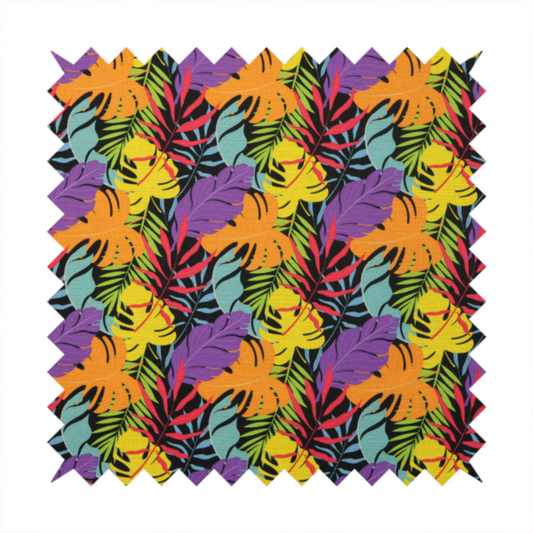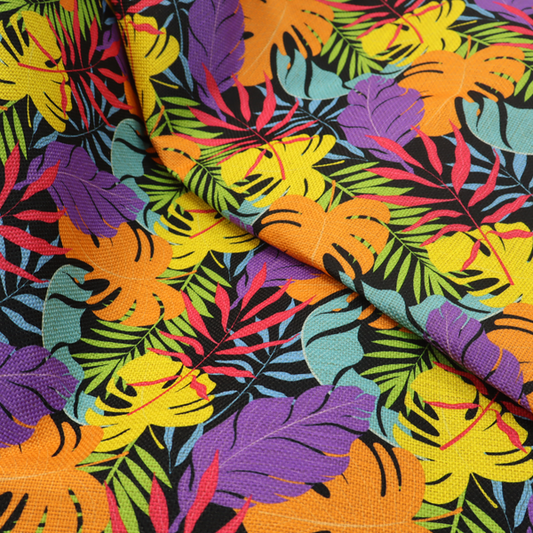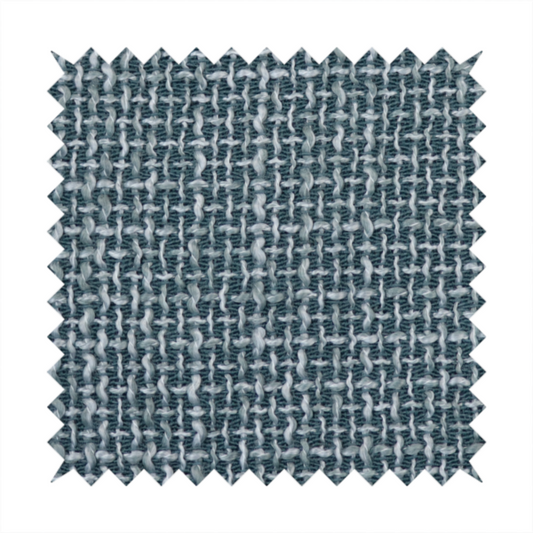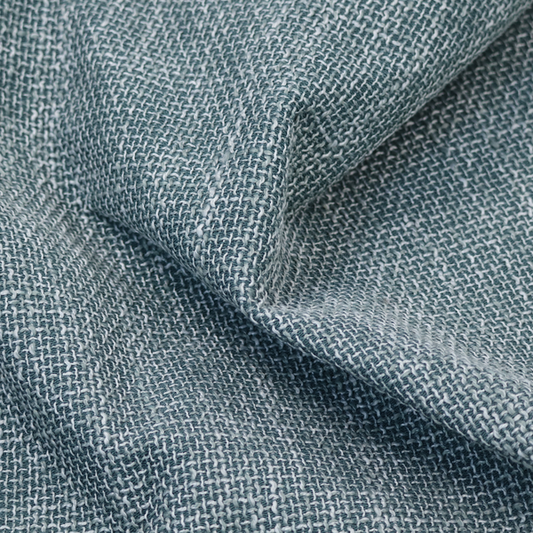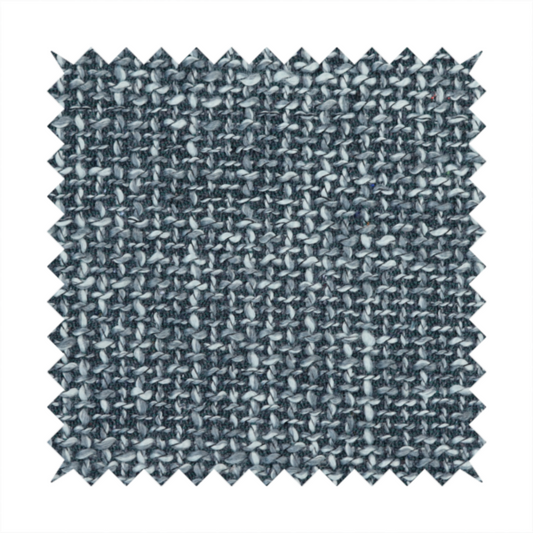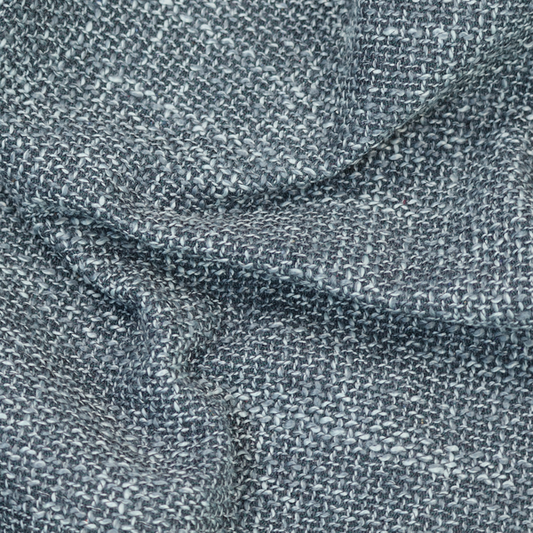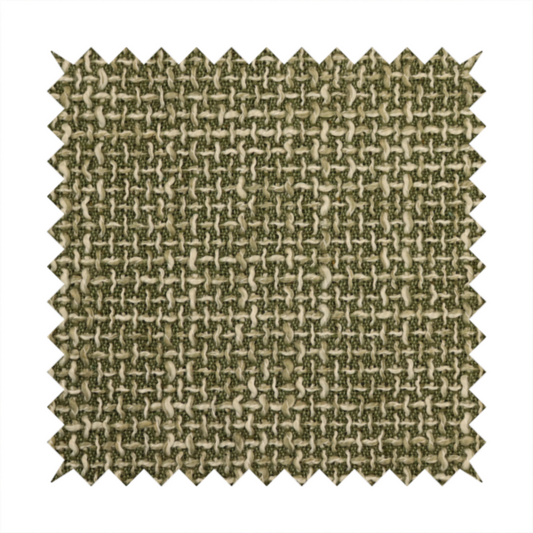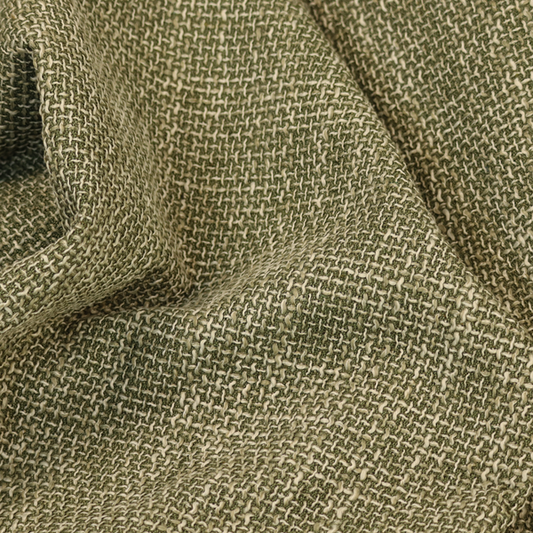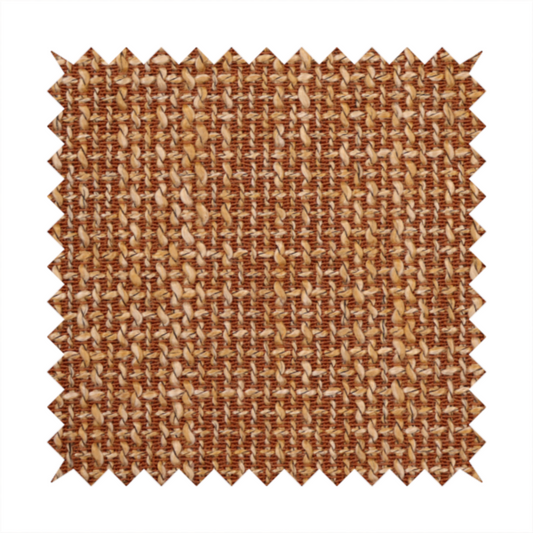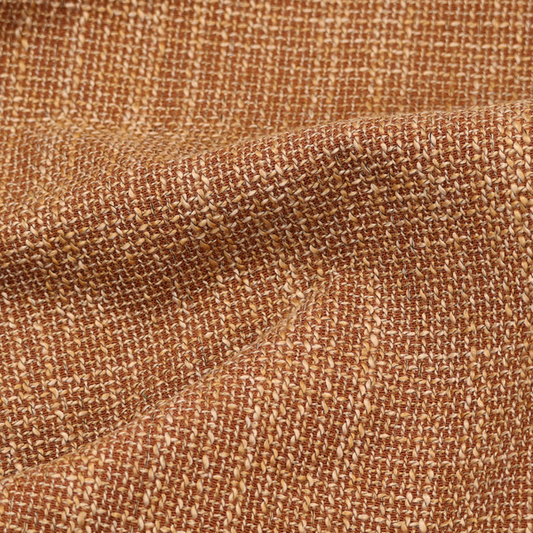Collection: Weaves Fabric
Beautiful and reliable weave fabric for every project
Weave fabric is a term that we commonly use to describe the appearance of fabrics that have been created through interweaving different yarns in a particular pattern.
These patterns can be hard to notice to the untrained eye to begin with, especially if your choice of woven fabrics is in one colour, as the threads are so fine. However, once you're familiar with the different fabric weaves, we guarantee you won't be able to unsee them.
When it comes to weaving fabrics, there are three basic weaves that are used for the most part; the plain weave, the twill weave, and the basket weave. At the Yorkshire Fabric Shop, the weaves we use most are basket weave, open weave and fine weave, but not exclusively.
Most of the fabrics displayed on our site will fall under one of these three styles, as they're historically tried-and-tested, beautiful, reliable and most of all, they're our favourites.
In this article we will take you on a journey through these popular weaves as well as some more uncommon styles that you might come across in your search for the perfect fabric.
The fabric weave is not so much the process as the look
Whilst the fabric weave refers to the process with which the fabric was created, it's more important in terms of the appearance it creates to the observer. Different weaves give off different aesthetics, and you might well find one that catches your eye for your next project.
If you have already found some fabrics on our website and want to know which fabric weave it has been created with, feel free to get in touch with our friendly team who will be able to find that information out for you.
This could be especially important to you if you already have a style or aesthetic in a room and you're trying to match it, or if you want a particular contrast in fine detail. Not everyone will notice different weaves used, but you will, and that's what matters most.
What are warp threads and weft threads?
Before we take a deeper look into the different fabric weaves, it might be useful to explain some of the terminology used to explain the threading process. If you are already familiar with warp threads and weft threads (also referred to as warp yarns and weft yarns), then feel free to skip this section.
Essentially, warp and weft threads are the two main elements needed in order to turn simple thread into beautiful versatile fabric. A weaver places the warp yarns (held in tension) on a frame or loom and then passes the transverse weft yarn through, inserting it over and under the warp.
So to put it simply, horizontal weft threads are led through vertical warp threads or warp fibres repeatedly. So it's the pattern by which the consecutive weft fibres alternately weave through the warp threads that creates the different fabric weaves that we see today.
Plain weave fabric
Fabric created with plain weave is one of the most commonly used weaves, more for its simplicity and ease rather than for standout style.
Plain weave is when the warp threads and weft threads are the same size, with the same number of ends per inch as well as the same number of picks that are woven together.
It has a chequered board appearance and is sometimes known as one up one down or over-under weave.
It's roughly estimated that somewhere around 80% of fabrics are created using an iteration of plain weave, because it's easy to make, flexible, less absorbent, strong and doesn't fray.
The downsides of plain weave are that it doesn't have much capacity to stretch, and that it creases easily. Velvet fabric is one of the popular plain weave fabrics, and is created with a slightly different method, as is flannel fabric, which have very different feels to them, which shows just how versatile the plain weave fabrics are.
Basket weave fabric
Basket weave is a really popular choice of fabric weave, and is sometimes referred to as matt weave by some of its users today. It essentially falls under a type of plain weave, but deserves its own category due to its rich history and continued widespread use in the modern day.
The basket weave dates back over 10,000 years, and it was most likely first used to create baskets from rattan, rather than material from threads, though the process is the same.
It is therefore likely that this specific fabric weave was utilised well before cloth weaving was even invented, but its luxurious pattern is exceptionally popular in fashion nowadays.
To make basket weave, two or more threads are twisted together, creating a thicker thread between the warp and the weft. This pattern is criss-crossed throughout the whole piece of fabric, creating a chequered pattern similar to how you might imagine a wicker basket.
The main benefits of the basket weave is its simplicity to make, the breathability created through its loose design, its durability and flexibility, and that it doesn't wrinkle easily. Generally, its looseness is the only potential downside, as some things naturally require a tighter-fitting fabric to match their desired aesthetic.
Open weave
The open weave is a technique or style that leaves the fabric looking like it has lots of holes in it. Don't worry, these holes don't mean that your keys will fall through, they're very tiny and combine to make a very appealing aesthetic if you opt for this fabric weave.
The holes that you see are actually the spaces between the warp threads, and these can differ greatly depending on which manufacturing process has been followed. These holes are the defining characteristic that make it an open weave fabric.
Often, fabrics with these qualities are used in home decor because they allow light to filter in and have a beautiful texture to look at. For example, if you have curtains made with open weave fabric, they won't be blackout as they'll let a certain amount of light through, but this light will be filtered through the colour of the fabric.
The spaces that are left between each warp yarn in the weaving process give this fabric its particular look. This type of fabric weave is very versatile, and is a popular choice for clothing, blankets, curtains, and even bandages.
You won't generally get a smooth fabric from this method, but you will get something that's breathable, flexible, and beautiful to look at.
Twill weave
If you're into your textiles, you'll almost definitely be familiar with the famous twill fabric. If the name isn't ringing a bell, you'll probably be able to recognise it visually by its stand-out diagonal ribbed pattern - you probably have some twill weave items in your wardrobe.
Twill fabrics have two different faces, with the front being referred to as the technical face and the back being referred to as the technical back. The technical face is the more aesthetically appealing of the two, and will usually be the choice side on display.
The technical back of the twill weave fabric will have a sort of inverse colourway (not precisely inverse), so there are ways to make both sides appealing. Both sides of fabric made with twill weaves will have an interesting texture due to the wale.
Although twill weaves are often used for lavish designs in fashion, if they are created with closely packed warp and weft yarns they become higher-count fabrics, which can in turn give them air and water-resistant qualities, and make them less likely to soil.
Denim is actually created using a twill weave, as are lots of clothes for the workplace, for the above reasons and their durability. There are other specific types of twill weaves that are worth mentioning too, which we'll go through below.
Broken twill weave
Broken twill is a weaving pattern in which the diagonal weave of the twill is intentionally reversed at every two warp ends to form a random design. One series of warp and one series of weft yarns are used to make broken twill, and both horizontal and vertical broken twill weaves are popular choices.
Broken twill weave is also known as herringbone weave, and is often considered as its own type of fabric because of its distinctive zigzag pattern.
Diamond weave
Diamond weave is another iteration of the twill weave, and it is really noticeable on larger items when viewed from a distance. This makes it a popular choice for rugs and upholstery fabrics, as the pattern adds to the aesthetic in much the same way as the colourway does.
To identify diamond twill, look out for diamonds that are seen through the interlaced shapes arranged parallel to each other. This is typically a fabric woven by advanced designers, as it is easy to confuse the patterns that the warp thread and weft thread have to follow throughout.
Other notable fabric weaves
There are so many different choices of fabric weave that one might choose from, from the tapestry weave to the dobby weave, that it's impossible to cover them all in one article. Here are a few more of our favourites for you to consider and enjoy on your journey through weaves.
Satin weave
The satin weave is a very delicate fabric weave that looks like a cross between chain mail and lace. It is commonly used for clothing, curtains, and table linens. In satin weave, the warp threads are relatively tight whilst the weft threads are loose, so there is more space in between the two than in other fabrics.
Jacquard weave
A jacquard fabric weave is simply a type of fabric that has been woven using a jacquard loom. The jacquard loom is one of the oldest types of looms in existence, and it's distinguished by its ability to create intricate patterns and designs.
Jacquard looms can also be used to create two-sided jacquard fabrics where both sides look different, which makes them popular with fashion designers.
Taffeta weave
Taffeta is a type of woven fabric that is particularly light with a smooth and crisp finish, which is why it is often used for formal clothing, like wedding dresses. Taffeta has a very high resistance to tearing and is most commonly made using cotton or silk threads.
The taffeta weave is created by weaving two sets of yarns together in a criss-cross pattern, which creates a smooth, flat surface. The weave also allows for the fabric to be stiffer than other types of fabrics that use only one set of yarns.
Crepe weave
The crepe weave is another type of weave that is made up of two sets of yarns, but in this case those yarns run in opposite directions, alternating every thread. The result is a fabric with a texture similar to velvet but with a softer feel and more flexibility, with a shiny, crepe-like appearance, which is where it originally got its name from.
Choosing the right weave fabric for your project
After reading through all of that, we wouldn't be surprised if you're overflowing with information about warp yarns and weft yarns, but fear not. Choosing the right weave fabric for your project shouldn't be hard, as the material itself is more important to get right.
Most people tend to opt for a plain weave fabric if they want the colour or pattern on the material to shine through in their work, and with thousands of options on our site, you'll be spoilt for choice.
However, if you've already done your research and are after a specific weave choice, reach out to us to find out what we can offer in that manufacturing style. Alternatively, if you've got your mind set on a specific design on site, our team can help you identify which woven patterns have been used to make which fabrics. Just say the word.
Become the newest member of our Designer's Club!
Become the first to be informed of new arrivals, exclusive products, discounts, workshops and so much more
- Choosing a selection results in a full page refresh.
- Opens in a new window.


